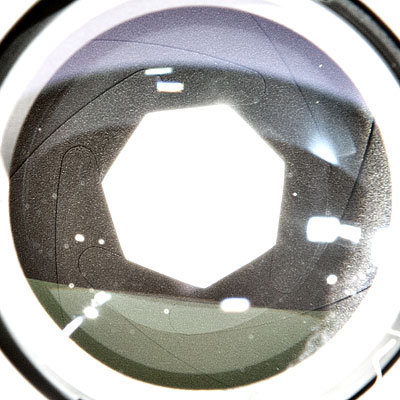BOKEH
DEFINITION
Bokeh is a Japanese word that describes confusion or fuzziness. It is used in photography to describe the quality of out of focus blur.
Bokeh can be observed when a picture has a shallower depth of field, with a subject in focus and perhaps a background out of focus. This is typical with fast aperture lenses like f/2.8 or f/1.4. But depth of field does not just depend on f-number, but also focal length. This is because depth of field is related to the size of the entrance pupil of a camera. Read more about depth of field.
Bokeh is not a measurement of how out of focus a lens gets, but a subjective analysis about the quality of blur.
EXAMPLE
The example below shows three Nikon lenses. The first (left) is the older Nikon 35mm f/2 AF-D. It has a straight 7 bladed diaphragm. The second (center) is the newer 50mm f/1.8G AF-S. It is the newest out of the three and has a 7 rounded blade diaphragm. The third (right) is the legendary Nikon 85mm f/1.4 AF-D. It is known for its excellent bokeh. It has a 9 rounded blade diaphragm.
The example shows the lenses stopped down from their wide open aperture. The blurred subject is my sink. It has a few point spectular reflextions which are blurred because they are not in focus. The 35mm shows the blurred elements by its 7 sided polygon diaphragm shape and has harsh edges. The newer 50mm has improved bokeh, with softer more rounded edges. Lastly the 85mm has more soft background blur and shows more rounded blur.

IMPORTANCE
Why so much emphasis on blur? Photographers pay a lot of money for lenses which possess excellent bokeh. I do! Lenses with good bokeh, not just make a subject pop, but subdue distracting backgrounds. However, lenses with poor bokeh can make backgrounds more distracting and usually create artifacts in the background which can be pattern-ish and ugly, taking away from the subject which is in focus. Once you start noticing the differences, it becomes addicting. I know it is ridiculous, but I get annoyed when watching a movie that has poor bokeh.

NIKON 50MM F/1.8G AF-S BOKEH EXAMPLE
Bokeh is probably the most complex technical studied aspect of photography. Before you attempt to understand it, you should have a full understanding of depth of field.
A common misconception is that excellent bokeh comes from 9 rounded or curved blade diaphragms. Zeiss published a 40 page article on this misconception. The diaphragm or iris of the lens does play an important role, however simply because it is 9 rounded blades does not guarantee anything besides soft 18 point sun stars, which is usually not desired and has nothing to do with bokeh. Most modern Nikon lenses are 9 rounded blade diaphragms.
THE DIAPHRAGM

The diaphragm of a lens affects a variety of characteristics about the out of focus area. The geometry of a blurred point is a determined by the shape of the diaphragm. When a lens is wide open, or at its largest aperture, the diaphragm is typically in the form of a circle shape, regardless of the amount of blades. When the lens is stopped down by 2 or 3 stops, the shape of the diaphragm begins to play a larger role. A five bladed diaphragm will show a pentagon shape of an out of focus point. A 7 blade diaphragm will be a heptagon. 9 round blades attempts to maintain a circle shaped blur.
The diaphragm determines the shape, but lens aberrations determine the quality of bokeh. Poor bokeh can exhibit a ring or harsh edge of a blurred point. Good bokeh will mimic a more Gaussian softening, where a blurred point has uniform brightness or gets softer to the edge.
Good background bokeh can be a tradeoff for good foreground bokeh. Typically foregrounds are not out of focus. Spherical aberration adjustments can improve the background bokeh but sacrifice the foreground bokeh. The best lenses don't possess this tradeoff, and can produce great bokeh both in the foreground and background.
Good bokeh can even be a tradeoff for sharpness and contrast.
Older lenses were made without aspherical elements. Spherical lenses tend to have aberrations most notably in the corners wide open. This can cause the bokeh to be oval shape or stretched based on the aberrations. It can also affect color.
Most modern lenses are made with some aspherical elements which have helped reduce the effects of spherical aberrations. However, the spherical elements can have an effect on the brightness uniformity of a blurred point. If an aspherical element is molded, or the glass is not ground properly, an out of focus point may have a texture inside it resembling the poorly ground glass.

Diaphragm Shot (Tape used to hold diagphragm's position)
TAKEAWAY
These are just some main examples of lens characteristics that affect bokeh. This is another example of why MTF charts should not be over analyzed. Sharpness is usually over emphasized. Analysing the quality of lenses involves much more than just looking at data charts or tech specs. You need to try them out.